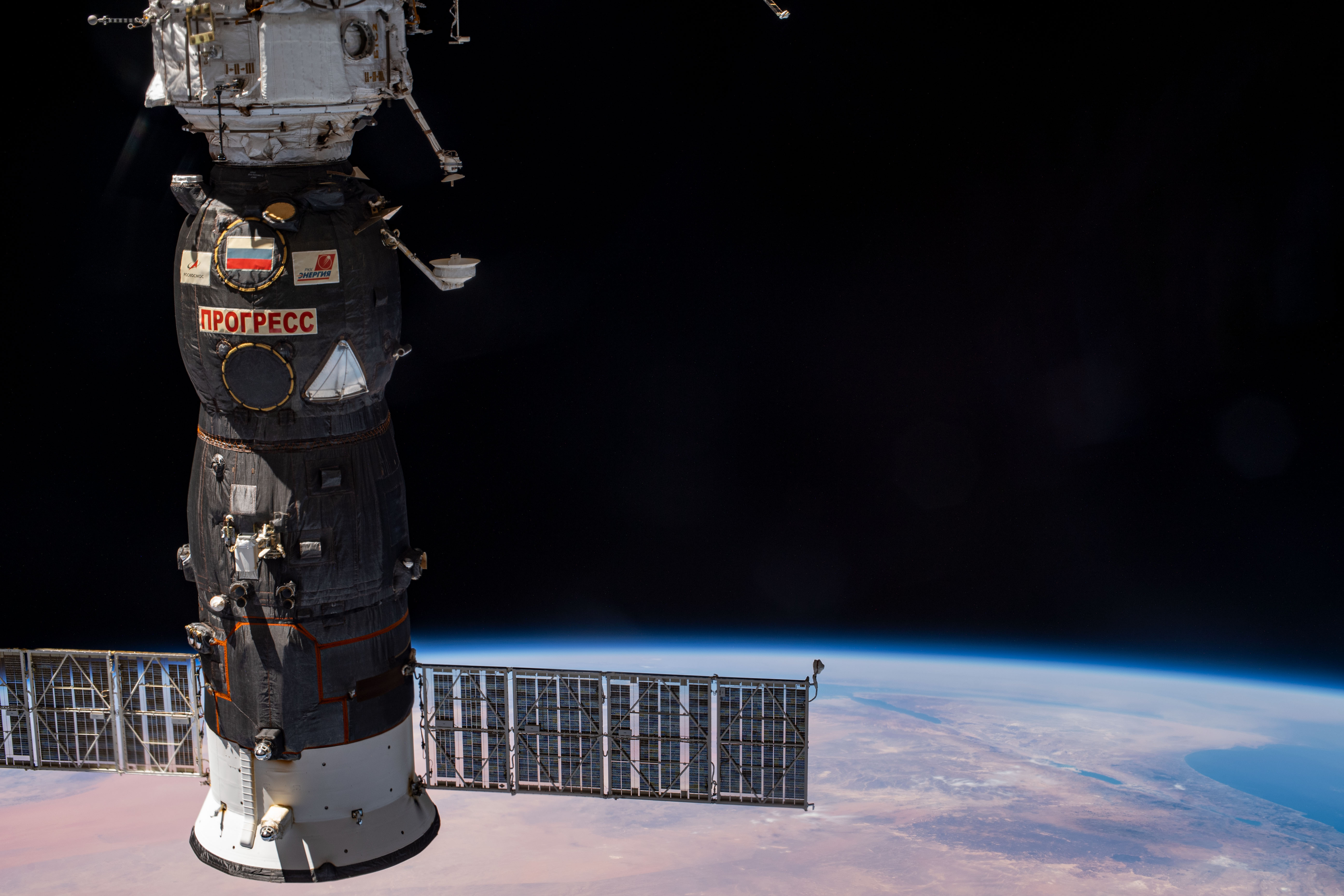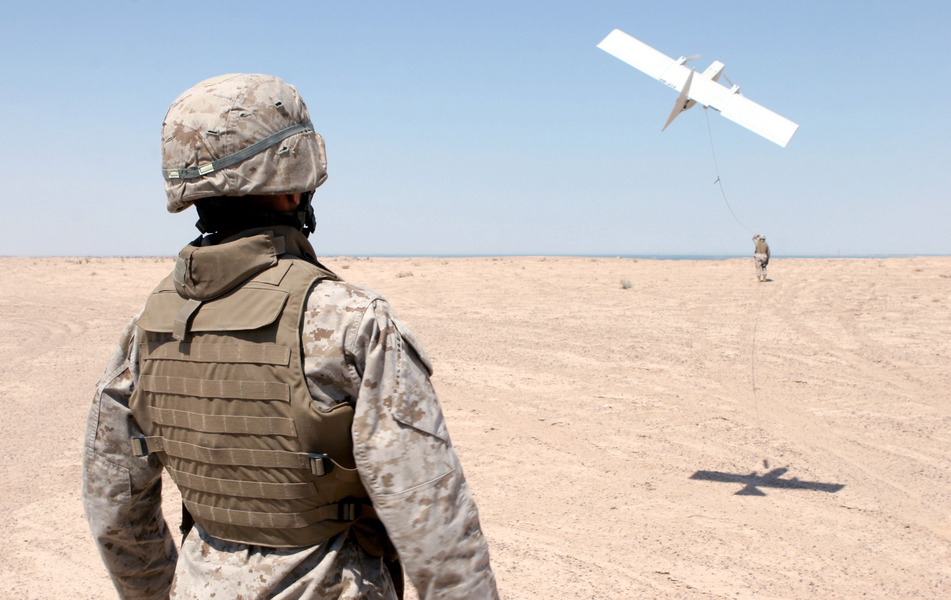Russian Nuclear ASAT Weapons: The Fallout

Published by The Lawfare Institute
in Cooperation With

In light of the reports of Feb. 14 that Russia is attempting to develop and deploy nuclear-tipped anti-satellite (ASAT) weapons in space, a primer is in order on the state of the existing “weapons in space” regime, the technical aspects of proliferating an in-orbit nuclear-tipped ASAT capability, the strategic stability risks posed by these weapons systems, and potential policy responses at the national and international levels.
At the outset, it is worth noting that there is a high degree of uncertainty in the open-source and conflicting accounts in the media as to the contours of Russia’s capability. For example, some commentators have suggested that the recent news involves Russia’s use of nuclear propulsion in space, while others have suggested that Moscow has new space assets with a nuclear warhead. This factual distinction bears consequences in terms of Russia’s conformity with international law as well as the strategic effects of these capabilities. Indeed, the use of nuclear technology for propulsion is not a particularly new or novel concern. There are also substantial differences between direct-ascent nuclear-tipped ASAT weapons stationed on the Earth’s surface as opposed to in orbit—with the former offering a more gradual shift in capability than the latter.
Moreover, there are conflicting accounts as to how close Russia’s capability is to deployment. If the former, then Moscow is not in violation of the Outer Space Treaty (OST). If the latter, then Moscow has certainly violated the current space security regime. Either way, it is worth interrogating whether and how emerging capabilities are likely to alter Washington’s strategic calculus as well as whether the existing space security regime is fit for purpose.
The Existing Space Security Regime
The Outer Space Treaty was ratified by the United States, the United Kingdom, and the Soviet Union in 1967 to set norms concerning the neutrality and free use of space. The treaty, in spirit, discourages the militarization of space. Specifically, Article IV of the OST prohibits any signatory from orbiting or stationing nuclear weapons in space. Importantly, Article IV leaves room for transitory nuclear weapons in space—such as ballistic missiles, direct-ascent ASAT weapons, and fractional orbital bombardment systems that do not complete a full orbit of the Earth—by virtue of what the treaty does not prohibit: “States Parties to the Treaty undertake not to place in orbit around the earth any objects carrying nuclear weapons or any other kinds of weapons of mass destruction, install such weapons on celestial bodies, or station such weapons in outer space in any other manner.”
Russia’s deployment of an in-orbit nuclear-tipped ASAT capability would certainly violate the OST—and throw the existing architecture of space governance (such as it is) into question. That said, the treaty does not explicitly ban states from developing such systems, only fielding and using them. Since the 1960s, there have been various attempts to bolster space governance, but they have not gained much traction. During the Cold War, the United States and the Soviet Union attempted to negotiate limits on ASAT capabilities, but multiple rounds of talks broke down, in part over concerns surrounding verification. When the OST was negotiated, policymakers determined that government-owned satellites (called “national technical means” in government parlance) would be sufficient to verify compliance; however, the growth of the commercial space sector and the proliferation of dual-use technologies have made it increasingly difficult to distinguish between military and civilian technologies—exacerbating risks of crisis instability. More recently, various multilateral governance initiatives have focused on norms pertaining to responsible behavior in space, but these commitments remain voluntary and unverifiable.
The reports regarding Russia also represent the latest development in the militarization of space—whether for the purposes of intelligence, surveillance and reconnaissance, or targeting space assets during crises. With that said, this particular crossing of the Rubicon, if confirmed, would represent a significant moment that presents new strategic stability risks in the space domain with consequences for framing any future efforts to promote space-related security.
The Basics of Orbital Anti-Satellite Weapons Systems
Relatively speaking, satellites are sitting ducks in space. Once satellites are deployed, they orbit the Earth with a largely fixed velocity and altitude. Their movement is so predictable that their calculated orbital data (explanation here), accurate for most purposes, is valid for up to two weeks without degradation.
Yet space situational awareness (SSA) remains a challenge. Satellites are fast, small objects that are subject to external and internal perturbations such as atmospheric drag and thrusters (chemical and electrical propulsion systems are most common) used to accelerate or decelerate, respectively. Fundamental limitations on the resolution of radars used for SSA combined with an ever-crowded orbital landscape make tracking the exact position of a satellite difficult even in the best of circumstances. When dealing with satellites that are developed specifically to be stealthy, or to maneuver in space (such as in the case of hypersonic weapons), SSA remains a significant challenge—and recently led to rushed efforts to increase U.S. capacity to identify and track assets in orbit.
When aiming to intercept satellites, knowing where they are in orbit is just one piece of a larger puzzle. Building a weapons system that can disable the satellite is much more difficult. Direct-ascent anti-satellite (DA-ASAT) weapons systems are launched from Earth and accelerate rapidly to a speed greater than the orbital speed of the target satellite. Using the prediction of where the satellite will be, the DA-ASAT weapon then intercepts the satellite at a point later in its orbit. These systems are hard to get right. In recent years, many countries, including India, China, and Russia, have tested ASAT weapons. While an exact count of ASAT tests is hard to obtain, it is clear that these tests are not guaranteed to succeed. Some, such as India’s Prithvi Defence Vehicle, have publicly failed.
To mitigate the many difficulties of hitting a moving target from the Earth’s surface, co-orbital ASAT weapons have rapidly become the intercept system of choice. Co-orbital ASAT systems are staged into orbit as any other satellite. At the time it is needed, the system deploys a missile that then accelerates and intercepts a target satellite.
The advantages of co-orbital ASAT systems are numerous. The distance to intercept is shorter and the angular range of intercept is larger, both factors that increase accuracy. Additionally, the amount of fuel needed for a missile to accelerate to the requisite speed is lower as the system is already at a sufficient orbital speed. Co-orbital ASAT systems are also not easily detected. They can be deployed weeks in advance of a strike, and any launched missile has a harder-to-detect heat signature not only due to the lower distance and energy output associated with its anti-satellite mission but also because a space-based ASAT would have a time to target much shorter than their direct-ascent alternatives.
Risks Posed by Orbital Nuclear Anti-Satellite Weapons Systems
Both DA-ASAT and co-orbital ASAT systems are hit to kill—with a single anti-satellite asset hitting one target in orbit. When there are multiple such targets to be taken offline, such as trains of communications satellites, the ability of these systems to force the services supported by an adversary’s space assets offline are extremely limited.
One potentially effective method to deny an entire area with one-to-one ASAT systems is to outfit an interceptor with a nuclear warhead. The resulting nuclear explosion, even against one target, releases radiation, heat, and an electromagnetic pulse (EMP) along with collisionless shock—which can prevent satellites from operating in large portions of an orbital plane. Sensitive components such as imaging sensors can be permanently affected by tiny amounts of energy (as low as a few joules per second per square centimeter). A one-megaton nuclear warhead can achieve this at distances on the order of hundreds of kilometers from a given target. Space assets are not currently constructed with the robustness needed to survive the EMP and the ensuing radiation belt, and these events are not typically included in existing risk calculations—as the robustness required to survive in such an environment would drive up the weight and costs associated with satellite assets significantly. Also, the resulting radiation would likely persist for an extended period, denying the use of that orbit for that duration.
The U.S. Department of Defense has been preparing to respond to one-to-one ASAT attacks through technical means, such as through the creation of responsive launch systems, as well as with policy mechanisms—including a commitment not to engage in ASAT weapons tests. However, responding to the simultaneous destruction of multiple orbital assets has not been a priority the United States has expressed through its acquisition behavior. The denial of entire orbital areas would further degrade the United States’ abilities to use space for intelligence, surveillance and reconnaissance, and communications purposes, pushing the situation higher on the escalation ladder than a simple one-to-one ASAT intercept. Another major cause of recent concern among U.S. policymakers might be the U.S. and its allies’ comparatively heavy reliance on space assets in comparison to Russia and China.
An additional global security concern is a nuclear detonation in space, which would have almost indiscriminate effects. A nuclear strike against U.S. satellites could affect and destroy satellites from other countries (including Russia itself). This would pull multiple, potentially nuclear-armed, countries into the fray, again making the escalation ladder look like an escalation elevator.
An Uncertain Future for Space Governance
Against this backdrop, there is a great deal for the U.S. government and the international community to be concerned about.
The Outer Space Treaty, primarily via Article IV, remains the primary document for managing the deployment of nuclear weapons in space. Additionally, Article IX of the OST requires that all signatories operate with due regard for the interest of all other signatories. It is nearly impossible to argue that any user of nuclear ASAT weapons would be operating with due regard for other signatories of the OST. Article IX also requires that all signatories avoid contamination of celestial bodies in the course of their actions in outer space. Radiation from a nuclear weapon used in space would immediately contaminate the Earth’s atmosphere, violating Article IX.
Moving forward, it remains to be seen whether this most recent development serves as the death knell for global space governance efforts—or reinvigorates them. The OST, while instrumental in establishing principles for the peaceful use of outer space, has always had unclear verification mechanisms—thus past efforts to build on the treaty. This deficiency, coupled with inadequate enforcement power, poses challenges in ensuring compliance.
One of the potential paths toward reinvigorating the existing OST regime is to leverage (and potentially build on) Article IX. Article IX allows any signatory to the OST to provide or request “appropriate international consultations” with another co-signatory if it believes that parties to the treaty are engaging in “potentially harmful interference with activities in the peaceful exploration and use of outer space.” Japan used this mechanism to request that Beijing clarify its ASAT test of Jan. 11, 2007. Others have argued for substantially bolstering the arbitration process for disputes in the space domain that build on Article IX. The United States and other interested signatories could use this provision in the OST to seek further information on Russia’s nuclear ASAT aspirations. Ultimately, the OST’s verification mechanisms are weak. This episode confirms the need for strong and resilient verification mechanisms that maintain responsible activities in space.
Global commitment to peaceful space exploration remains, though many countries have begun to include defensive military capabilities in their peace plans. The failure of Beijing and Moscow to sign on to arrangements such as the Artemis Accords, or to come to agreements in multilateral fora like the U.N. Committee on the Peaceful Uses of Outer Space (COPUOS), signals the need for a new school of thought surrounding the peaceful use of space—one that includes defense as part of a holistic peace plan. It is clear that the norms surrounding the use of space have shifted since the signing of the OST. Given the current state of geopolitics, new agreements would likely have to represent a coalition of the willing. Moving forward, there are important questions to be answered as to what the space governance regime loses as it turns away from universal membership provided by the OST.
A New Arms Race?
Each OST signatory has questioned whether it has the appropriate means to deter or respond to the deployment of ASAT capabilities, nuclear or conventional, in space. These discussions have resulted in the proliferation of defensive military capabilities in orbit. Before the recent news, Russia already began to push the bounds of its ASAT capabilities. The 2022 Annual Threat Assessment from the U.S. intelligence community warned of Russia’s continued efforts to escalate ASAT development to target U.S. and allied space infrastructure. Similarly, Chinese efforts to expand its military power have reportedly included development of counter-space capabilities. Russian President Vladimir Putin has also called for collaboration between Russia and China on “high-orbit assets” and “new prospective types of weapons,” which could herald a combined Russian and Chinese effort to revise norms about orbital weaponry.
Ultimately, this reality must be faced head-on with international agreements imposing strict measures on defensive (and, therefore, offensive) space capabilities. Rather than responding to aggression in space with further aggression, peace-seeking nations should develop stronger policy levers to mitigate further space weaponization. They should invest in resilience for critical space-based systems and nondestructive defenses for those systems.
The argument against self-restraint described above is that these measures leave the U.S. less able to engage with Moscow’s and Beijing’s space assets. But it is important to bear in mind that the reliance of the United States, Russia, and China on the space domain for military ends varies substantially. As such, it is important to think hard about potential calls for the United States to “match” its adversaries in the months ahead. In our view, it is more appropriate for Washington to continue attempts to offset adversary capabilities and shape competition in ways in which the United States stands to benefit. Measures such as the United States’ commitment to stop DA-ASAT missile testing are a step in this direction. Many countries, such as the United States, the United Kingdom, and Russia, are also developing and fielding directed-energy weapons that can disable threats without creating debris fields.
How these technologies combine with Russia’s capabilities—both old and new—remains an open question and one that we will all have to pay increasing attention to in the years ahead.

.jpg?sfvrsn=9e6395be_3)






.jpg?sfvrsn=82a6ee72_5)


